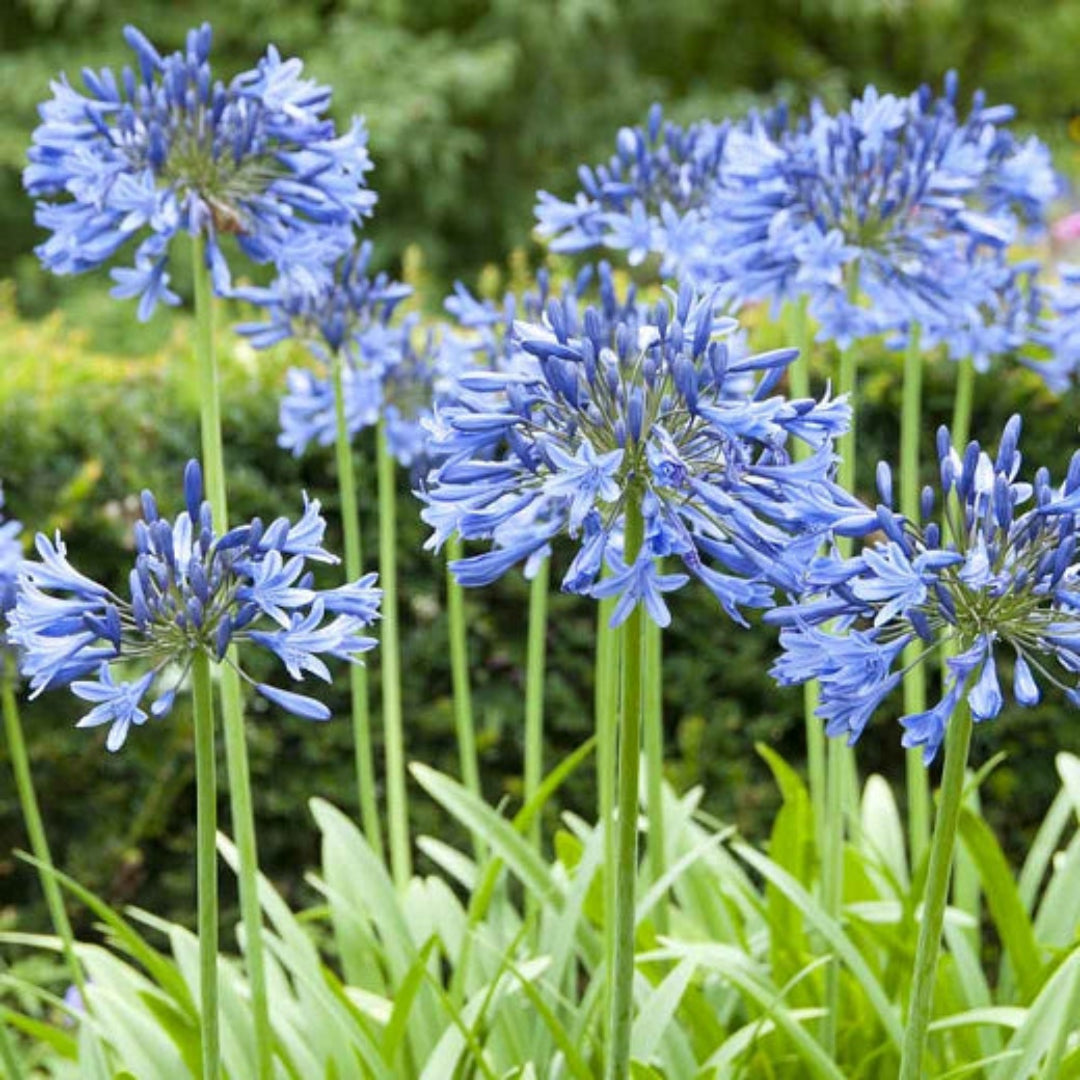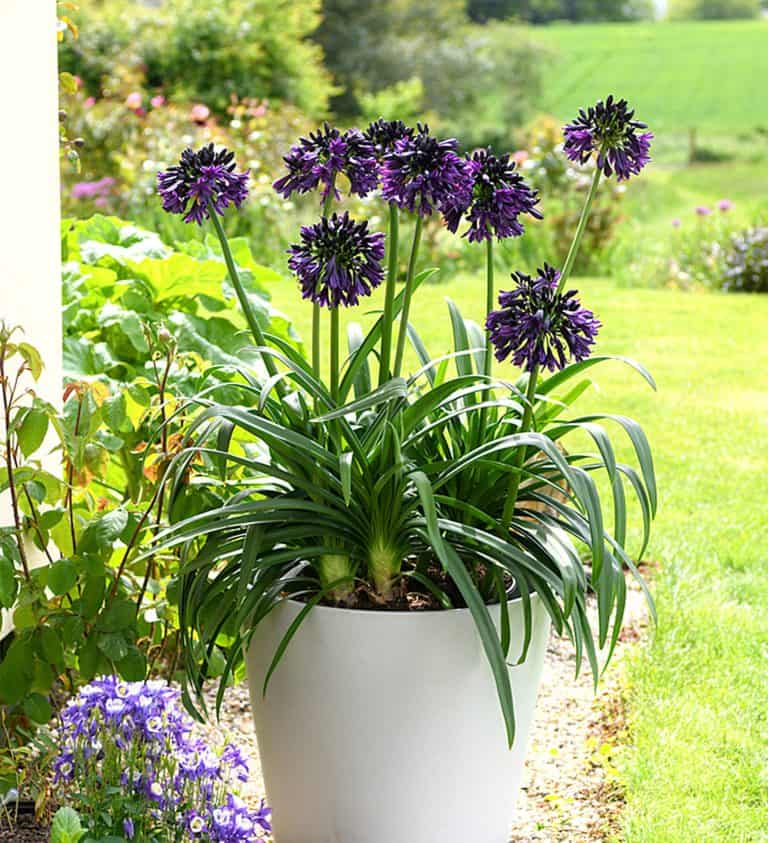Usual Agapanthus Issues and Exactly How to Resolve Them
Unleashing the Secret to Successful Agapanthus Cultivation: Idea for a Flourishing Yard
In the realm of horticulture, growing agapanthus efficiently calls for a calculated method that incorporates different facets of plant treatment. By comprehending the nuances of agapanthus farming, one can produce an environment where these plants grow and flower abundantly.
Growing Agapanthus: Best Practices
When growing Agapanthus, proper dirt preparation is essential for making certain successful growth and development of these lovely flowers. Agapanthus, generally understood as Lily of the Nile or African lily, grows in well-draining soil with a somewhat acidic to neutral pH level - Agapanthus. Prior to planting, it is crucial to modify heavy clay soils with raw material such as compost or peat moss to boost drain and give vital nutrients for the plants
To grow Agapanthus, choose a location that obtains complete sunshine to partial shade, as this will advertise healthy and balanced growth and plentiful blooming. Dig an opening twice the size of the plant's origin ball and position the Agapanthus at the same deepness it was previously expanding. Gently backfill the hole with dirt, weighing down firmly to eliminate any air pockets around the roots.
Water the recently grown Agapanthus extensively and continue to keep the dirt equally moist, particularly throughout the plant's energetic expanding period. Agapanthus. Applying a balanced plant food once a month can better support the plant's development and flowering. By following these finest methods for growing Agapanthus, you can develop a spectacular screen of these exciting blossoms in your yard
Suitable Soil Conditions for Agapanthus
For ideal development and growing success of Agapanthus plants, ensuring the soil conditions are suitable is crucial. Agapanthus flourishes in well-draining soil with a slightly acidic to neutral pH level ranging from 6.0 to 7.0. This type of dirt permits for ample water drain, preventing waterlogging which can cause root rot. To improve dirt drain, think about adding organic matter such as garden compost or peat moss when preparing the growing website. Furthermore, Agapanthus favors dirt that is abundant in nutrients, so integrating a balanced fertilizer throughout the expanding period can advertise healthy growth and vibrant blossoms.

Watering and Feeding Tips
To make certain healthy growth and vibrant blooms, proper watering and fertilizing techniques are vital for effective Agapanthus growing. Agapanthus plants gain from routine watering, particularly throughout the growing period. It is advised to water deeply as soon as a week, making certain the dirt is wet yet not waterlogged. During hot weather condition or in pots, more frequent watering may be necessary to stop the soil from drying out completely.
When it comes to feeding Agapanthus, a balanced fertilizer with equivalent parts nitrogen, phosphorus, and potassium can be applied in the springtime to promote healthy and balanced growth and flowering. Slow-release plant foods are suitable for offering nutrients gradually over an extensive period. Prevent over-fertilizing, as this can result in excessive vegetation growth at the expenditure of flowers.
Additionally, including natural issue like compost into the dirt can improve nutrient degrees and enhance soil framework, helping in the overall wellness of the Agapanthus plants. By following find here these watering and feeding suggestions, garden enthusiasts can ensure their Agapanthus plants grow and generate stunning screens of flowers.
Trimming and Deadheading Techniques
Correct trimming and deadheading methods play an important function in keeping the health and wellness and aesthetic appeals of Agapanthus plants, complementing the necessary practices of watering and fertilizing for effective cultivation. Trimming Agapanthus involves eliminating invested flower heads, yellowing or dead fallen leaves, and overall shaping of the plant to promote better development. Deadheading, the process of eliminating discolored flowers, not only improves the plant's look however additionally encourages additional growing.
When deadheading Agapanthus, it is advisable to clip off the blossom stem at the base making use of sharp, clean shears. This procedure reroutes the plant's power from seed manufacturing back into root and foliage development, advertising a much healthier and more robust plant. Routine deadheading can prolong the growing duration of Agapanthus and prevent self-seeding, which can result in congestion.
In regards to trimming, Agapanthus normally gain from a light trim after blooming to clean up the plant and motivate fresh development. Reducing back the spent flower stems and eliminating any type of dead or damaged foliage helps keep the plant's vitality and total look. Nevertheless, it is necessary to stay clear of reducing into the crown of the plant, as this can compromise its wellness.

Protecting Agapanthus From Pests and Diseases
Implementing efficient pest and illness management approaches is important to guarding the health and wellness and vigor of Agapanthus plants in cultivation. One usual bug that affects Agapanthus is the Agapanthus borer, a caterpillar that tunnels right into the plant, causing damage to the flowers and leaves.
In addition to parasites, Agapanthus are susceptible to illness such as origin rot and fungal fallen leave spots. These problems can usually be stopped by ensuring appropriate drain and staying clear of overwatering. Affected parts of the plant ought to be quickly eliminated to protect against further spread if indicators of condition show up. Fungicides might additionally be made use of as a therapy measure, following the producer's directions very carefully. By remaining attentive and resolving parasite and condition concerns without delay, garden enthusiasts can aid their Agapanthus grow and prosper.

Verdict
To conclude, successful farming of agapanthus requires appropriate growing techniques, suitable soil conditions, appropriate watering and feeding, regular pruning and deadheading, and defense from pests and check out this site illness. By following you could try these out these ideas and methods, gardeners can guarantee a growing yard loaded with gorgeous agapanthus flowers. Agapanthus. Keep in mind to keep regular treatment and interest to information to advertise the wellness and longevity of these stunning plants
When planting Agapanthus, proper soil preparation is crucial for guaranteeing successful growth and development of these stunning flowers.Water the recently planted Agapanthus completely and continue to keep the dirt uniformly damp, particularly during the plant's active growing season.For optimal growth and blooming success of Agapanthus plants, ensuring the dirt problems are excellent is crucial. When growing or hair transplanting Agapanthus, guarantee the soil is well-prepared to give the needed structure for the plants to establish themselves successfully. One common pest that influences Agapanthus is the Agapanthus borer, a caterpillar that passages into the plant, causing damage to the leaves and flowers.